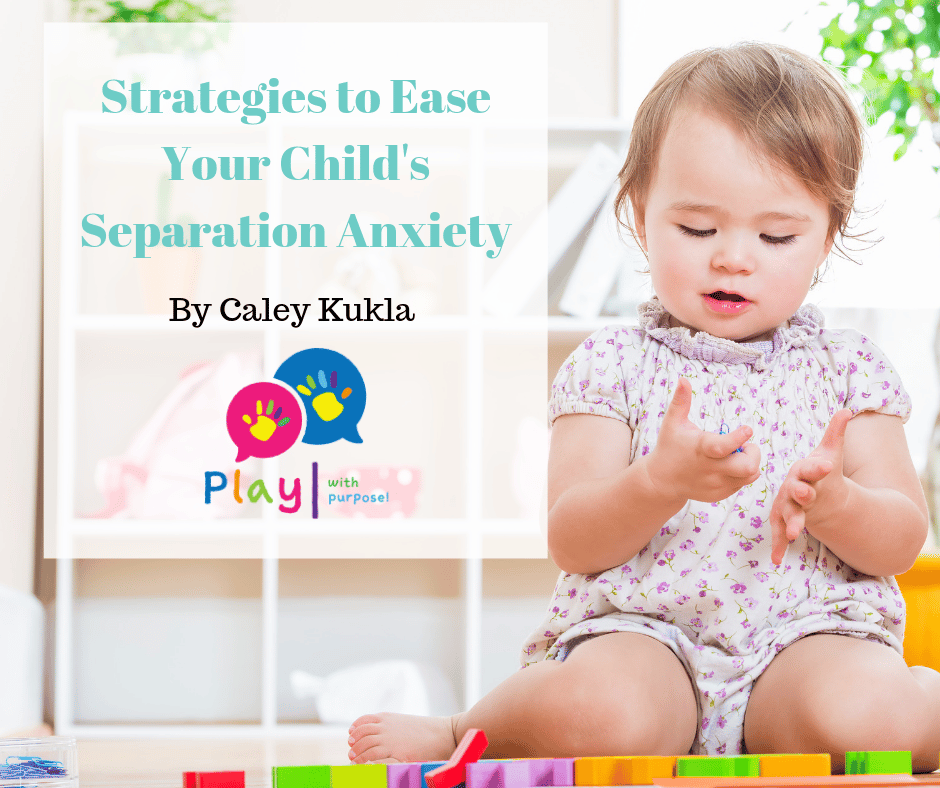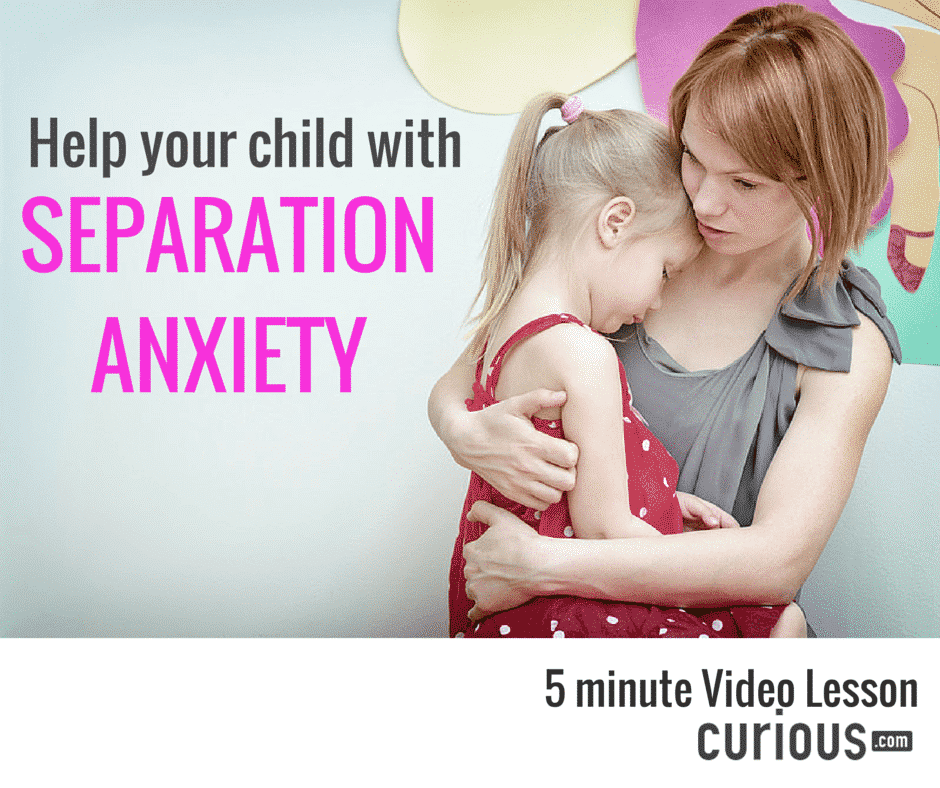Common Causes Of Separation Anxiety Disorder
Common causes of separation anxiety disorder in children include:
Change in environment. Changes in surroundings, such as a new house, school, or day care situation, can trigger separation anxiety disorder.
Stress. Stressful situations like switching schools, divorce, or the loss of a loved oneincluding a petcan trigger separation anxiety problems.
Insecure attachment. The attachment bond is the emotional connection formed between an infant and their primary caretaker. While a secure attachment bond ensures that your child will feel secure, understood and calm enough for optimal development, an insecure attachment bond can contribute to childhood problems such as separation anxiety.
An overprotective parent. In some cases, separation anxiety disorder may be the manifestation of your own stress or anxiety. Parents and children can feed one anothers anxieties.
If it seems like your childs separation anxiety disorder happened overnight, the cause might be something related to a traumatic experience rather than separation anxiety. Although these two conditions can share symptoms, they are treated differently. By understanding the effects of traumatic stress on children, you can help your child benefit from the most fitting treatment.
Do Toddlers Experience This At Night Too
Separation anxiety in toddlers at night is pretty common. Lots of kids rebel at night with separation anxiety which, in turn, causes a major strain on your toddlers bedtime and can lead to full-out tantrums. Naps also become a big battleground for toddlers. You might find that your little one simply refuses to sleep and will cry and scream when told its nap time. Oy.
What Is Separation Anxiety In Children
Children with separation anxiety might cry or cling to their parents or carers when being separated from them.
Fear of strangers is similar to separation anxiety. Its when children get upset around people they dont know.
These anxieties are nothing to be concerned about. Children are starting to move around more at this stage, so these anxieties make sense from a survival point of view. That is, if children could crawl or walk away from their carers but werent afraid of separation or strangers, theyd get lost more easily.
Recommended Reading: Do Essential Oils Work For Anxiety
Treatment Of Separation Anxiety Disorder
There are several commonly used treatments for Separation Anxiety Disorder. With children and adolescents, the sooner you intervene and seek professional help, the more likely your child will experience a positive treatment outcome.
Finding a psychotherapist who specializes in children and adolescents is the first step toward helping your child cope. There are different types of psychotherapy that can be effective in treating Separation Anxiety Disorder.
-
This is the primary type of psychotherapy recommended for treatment of Separation Anxiety Disorder. Through CBT, children learn how to recognize their anxious feelings and their physical responses to anxious thoughts. They learn to identify their triggers and the thought patterns that contribute to their anxious feelings. Through a variety of techniques, children learn strategies to manage their anxious thoughts and feelings and cope with their emotions.
-
Family therapy
Incorporating parents and other family members into the treatment process can improve outcomes for the child. In family therapy, parents and siblings can learn new ways to interact with the child and tease out patterns of behavior. They can also learn useful strategies to help the child when anxiety spikes.
-
Play therapy
Younger children can have difficulty connecting the dots between thoughts, feelings, and actions. For these children, play therapy can help them demonstrate and process their emotions and learn to cope with them.
Conquer Separation Anxiety For Good

I know it feels near hopeless for you or your little one to get relief anytime soon. But this is just a difficult phase, and it will pass, mama!
Its one of many small bumps in the road of your parenting journey.
We all have quite a few of those!
Try these tips weve discussed and see which of these methods work best for your toddler. As your tot eases into social routines, it each episode will be less dramatic.
Eventually, youll be able to do your happy dance .
Remember to pin me for later!
Recommended Reading: Is Fidgeting A Sign Of Anxiety
Surprise Them With Your Return
We know this may sound a bit odd at first, but your little one will love it. You can help alleviate toddler separation anxiety by surprising them every now and then. You might pop in during storytime, or when youre about to leave, announce that youre coming back later. Just make sure you dont do this too often as your toddler may become suspicious if you keep doing this kind of thing.
Stick With The Bedtime Routine
You should have already developed a bedtime routine to help your child wind down at night. It may include a bath, books, singing, or rocking. Stick with it, especially now. Your child needs consistency to help them feel more comfortable.
Its soothing and relaxing, plus it gives them the predictability they need to feel safe, which can help ease some separation anxiety, because they know deep down youll return in the morning.
Don’t Miss: How To Get Rid Of Performance Anxiety
Help Your Child Understand
It might feel hard to leave your child, especially if theyre upset. But over time, spending time with others will help your child build their independence.
Practise the idea of separation with your child to help them get used to it. Allow them to get more comfortable with the idea of being away from you.
- If you can, leave your child in the care of a close friend or family member for a short time.
- Give your child as much information as you can about any new routines. This will help them to know what to expect and feel less anxious.
- Help your child test out new routines. For example if theyre starting a new nursery, you could walk the route with them.
- Talk to your child about any shared plans in the near future. Help them see that there are things to look forward to and change can be a good thing.
- Speak to your childs nursery and school and your GP if you think extra support will help.
Tips To Handle Toddler Separation Anxiety
When you drop your toddler off at daycare, does your little one cry and scream in frustration every day? If so, its likely that your little one has toddler separation anxiety. According to Fran Walfish, Psy.D., children declare their independence when they start walking. But that doesnt mean theyre ready to separate from you completely yet.
When you arent in your toddlers presence, its common for your child to feel a sudden urgency to be with you. Thats because children at this age-long for the security and familiarity they get from their parents.
Read Also: Can Depression And Anxiety Cause Health Problems
Is It Normal For A 2
But while separation anxiety in children isnt uncommon, there is a more serious condition that is cause for concern: separation anxiety disorder. According to the Mayo Clinic, separation anxiety disorder usually begins around the preschool years and is a much more intense or prolonged version of normal separation anxiety. It can interfere with daily activities, school and possibly include panic attacks.
If you think your child has separation anxiety disorder, which can stem from a number of things, including the illness or death of a loved one, its crucial to professional advice as soon as possible.
What You Might Feel
Keep in mind that your little one’s unwillingness to leave you is a good sign that healthy attachments have developed between the two of you. Eventually, your child will be able to remember that you always return after you leave, and that will be comfort enough while you’re gone. This also gives kids a chance to develop coping skills and a little independence.
Recommended Reading: What Medication Helps With Social Anxiety
Tips For Parents To Help Their Struggling Teens
Are you concerned for your teen?If you worry that your teen might be experiencing depression or suicidal thoughts, there are a few things you can do to help. Dr. Christine Moutier, the chief medical officer of the American Foundation for Suicide Prevention, suggests these steps:
Look for changes.Notice shifts in sleeping and eating habits in your teen, as well as any issues he or she might be having at school, such as slipping grades. Watch for angry outbursts, mood swings and a loss of interest in activities they used to love. Stay attuned to their social media posts as well.
Keep the lines of communication open.If you notice something unusual, start a conversation. But your child might not want to talk. In that case, offer him or her help in finding a trusted person to share their struggles with instead.
Seek out professional support.A child who expresses suicidal thoughts may benefit from a mental health evaluation and treatment. You can start by speaking with your childs pediatrician or a mental health professional.
In an emergency:If you have immediate concern for your childs safety, do not leave him or her alone. Call a suicide prevention lifeline. Lock up any potentially lethal objects. Children who are actively trying to harm themselves should be taken to the closest emergency room.
Enlist The Help Of Your Childs Caregiver

The transition to child care is like a football pass. You can set everything up perfectly only to have your childs caregiver fumble the reception. Make sure the two of you are working together.
If your child is struggling with , ask your child’s caregiver what might help. A plan that the two of you agree on will be much easier to implement than something you dream up on your own.
Don’t Miss: Can Cats Have Separation Anxiety
The Right Way To Take Care Of Childs Separation Nervousness
In case your child is experiencing separation anxiousness, take consolation in figuring out that its going to ultimately fade. As infants and toddlers mature and develop, they turn into safer with their attachments and might take care of goodbyes extra successfully. However, that doesnt precisely show you how to whilst youre within the midst of it. So, what precisely are you able to do proper now? Listed below are some methods for lowering anxiousness when its time to say goodbye.
Create a routine
Think about your morning alarm goes off at totally different occasions every single day, and your day-to-day life is totally unpredictable. Chances are high youd really feel a bit cranky and unsettled. The identical is true of your child. Routine is important for adults and infants alike, particularly in relation to separation anxiousness. A daily each day routine to your child will present stability and can assist scale back stress of the unknown.
Equally, making a routine for if you say goodbye can provide your child a way of consistency. Whether or not you give them a kiss, sing their favourite music, or introduce a transitional object similar to a toy or blanket, making a goodbye ritual is an efficient manner to your child to create recognizable patterns within the goodbye course of.
Regularly introduce new locations and new individuals
Eradicate distraction methods or sneaking out
Take heed to your personal temperament
Compare Bedtime To Leaving During The Day
It can be difficult for even the strongest parents to watch their child cry when they leave. The best thing you can do for yourself is put things in perspective. Compare bedtime to leaving your child during the day.
If you were to drop your child off with a babysitter and they began to cry, you wouldnt take the next three days off of work to console them and hope it solved the problem. You also wouldnt cancel date night if your child started to cry when you left them with a grandparent.
You have to continue with your plans and help your child through it lovingly. You know they will be safe and well cared for wherever they are. Make sure you trust your babysitters to reduce your anxiety and help them through it even easier.
The same applies at night. You cant drop everything and sleep with them just because they struggle through a few weeks. You need to be consistent with the things youve already taught your child because you know they are capable of sleeping all night alone.
Also Check: How To Bring Down Anxiety
Create A Lots Of People Love Me Book
Put together a small child-sized photo album with people your toddler loves holding her: you, her other parent, her grandparents, her caregiver, aunts and uncles, cousins and friends. Add the new caregiver or teacher. Read the book often. Let her get used to her caregiver reading it to her in your presence. Many children are comforted by reading such a book when they miss their parents.
What Does Separation Anxiety Look Like In Toddlers
- Clinginess. Toddlers can be clingy or scream when a parent leaves the house, or even goes into another room, says Klein. They may demand that the parent stay right next to them or not want to say goodbye at day care or school.
- Extreme behavior. For some toddlers, the behavior can be loud crying and/or yelling, says Klein. In other cases, a child may get very quiet, look down and pull inward.
- Slow to warm up. In toddlers or older children, separation anxiety can present as slow to warm up, in which a child may not be willing to join the other children in a birthday party setting or at school, explains Siddiqui. Sometimes theyll be unwilling to play with other kids they dont know well.
- Waking up at night. Get the coffee ready! For some toddlers, night awakenings or refusing to go to sleep dragging out bedtime is part of separation anxiety, says Klein.
Also Check: Does Add Medicine Help With Anxiety
Give Your Child Kisses To Put In Her Pocket And Ask For Her Kisses For Your Pocket
A great trick to ease toddler separation anxiety: Tell your darling tot that whenever she misses you she can reach into her pocket and your kisses will always be there for her. Then tell her that you’ll be able to do the same. That way she’ll never be without a piece of you, plus a little ritual like this will help your tot understand it’s time for you to go.
If kisses are too intangible, you can give your child a small object nothing valuable in case she loses it! or you could even draw a heart or other symbol on her hand and a matching one on your hand.
Autism And Anxiety In Child
There is a growing body of evidence that suggests a strong link between autism and anxiety in children. Many children with autism spectrum disorder experience significant levels of anxiety, which can interfere with their ability to function and participate in daily activities. While the exact causes of this link are not yet known, it is believed that ASD and anxiety may share some underlying biological mechanisms. Treatment for anxiety in children with ASD often includes a combination of behavioral therapy and medication.
A comorbid diagnosis, such as autism spectrum disorder or other comorbid conditions, can be extremely disabling at times. Comorbid anxiety is caused by an excessive amount of worry and fear. Children with ASD frequently exhibit a variety of behaviors that overlap with symptoms seen in children with other types of anxiety disorder. Anxiety is a significant issue in the lives of many children and teens with ASD, despite the fact that the condition is not officially recognized. There is some debate about whether we should develop different ways to measure anxiety in people who have autism spectrum disorders . Children and teenagers with ASD will have a much harder time reporting their symptoms because they will be unable to do so. Cognitive-behavioral therapy has been shown to be the most effective way of treating anxiety disorders.
Recommended Reading: How To Treat Generalized Anxiety Disorder Naturally
Recognizing And Managing Separation Anxiety Disorder
How To Ease Normal Separation Anxiety

For children with normal separation anxiety, there are steps you can take to make the process of separation anxiety easier.
Practice separation. Leave your child with a caregiver for brief periods and short distances at first. As your child gets used to separation, you can gradually leave for longer and travel further.
Schedule separations after naps or feedings. Babies are more susceptible to separation anxiety when theyre tired or hungry.
Develop a quick goodbye ritual. Rituals are reassuring and can be as simple as a special wave through the window or a goodbye kiss. Keep things quick, though, so you can:
Leave without fanfare. Tell your child you are leaving and that you will return, then godont stall or make it a bigger deal than it is.
Follow through on promises. For your child to develop the confidence that they can handle separation, its important you return at the time you promised.
Keep familiar surroundings when possible and make new surroundings familiar. Have the sitter come to your house. When your child is away from home, encourage them to bring a familiar object.
Have a consistent primary caregiver. If you hire a caregiver, try to keep them on the job long term to avoid inconsistency in your childs life.
Minimize scary television. Your child is less likely to be fearful if the shows you watch are not frightening.
You May Like: Is Meditation Good For Anxiety